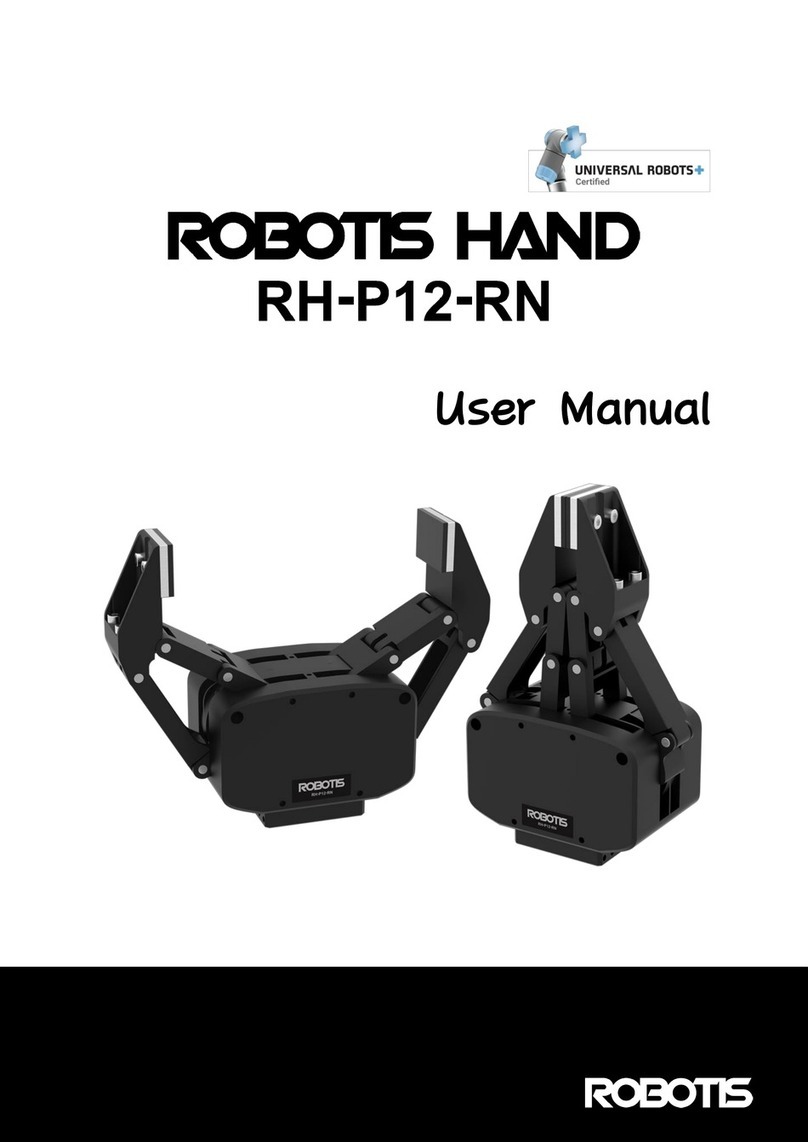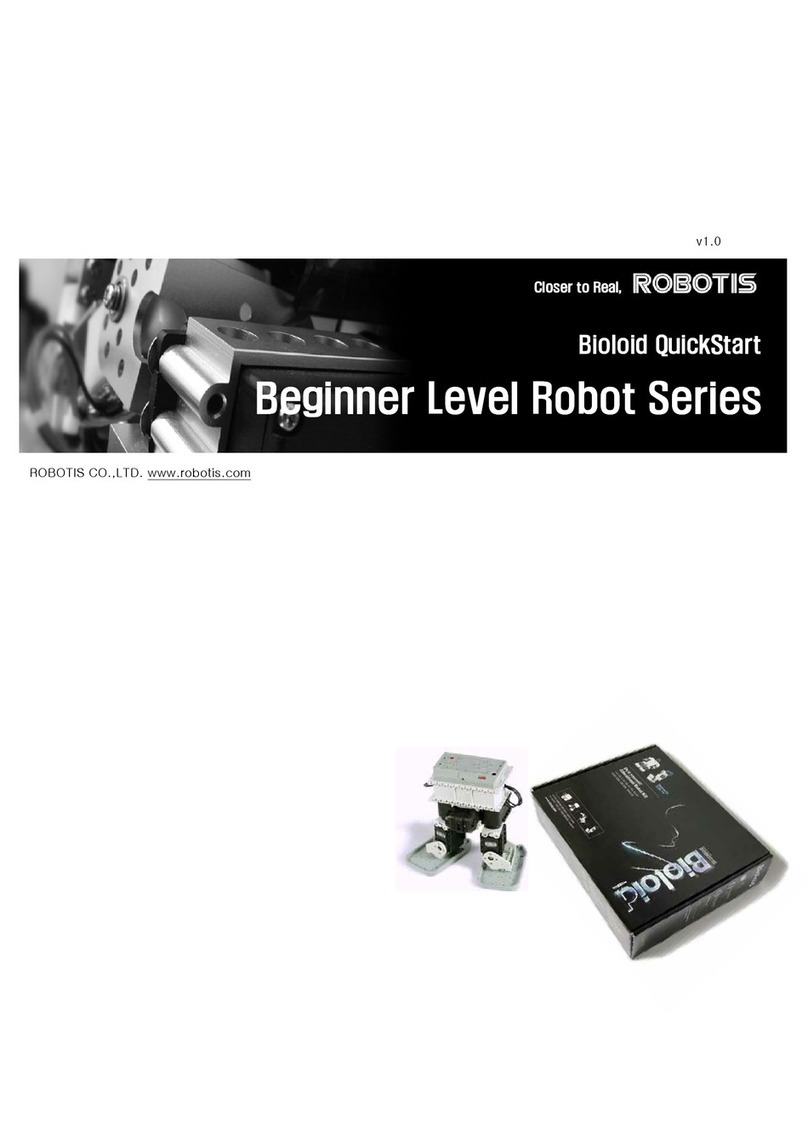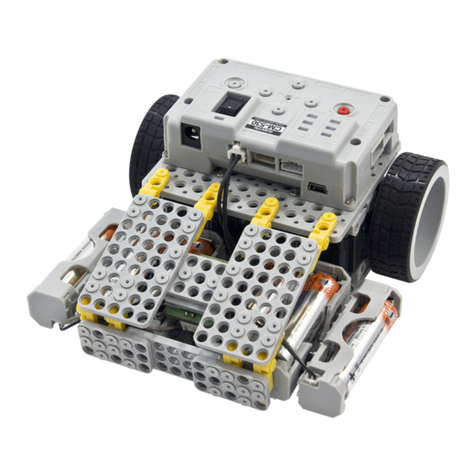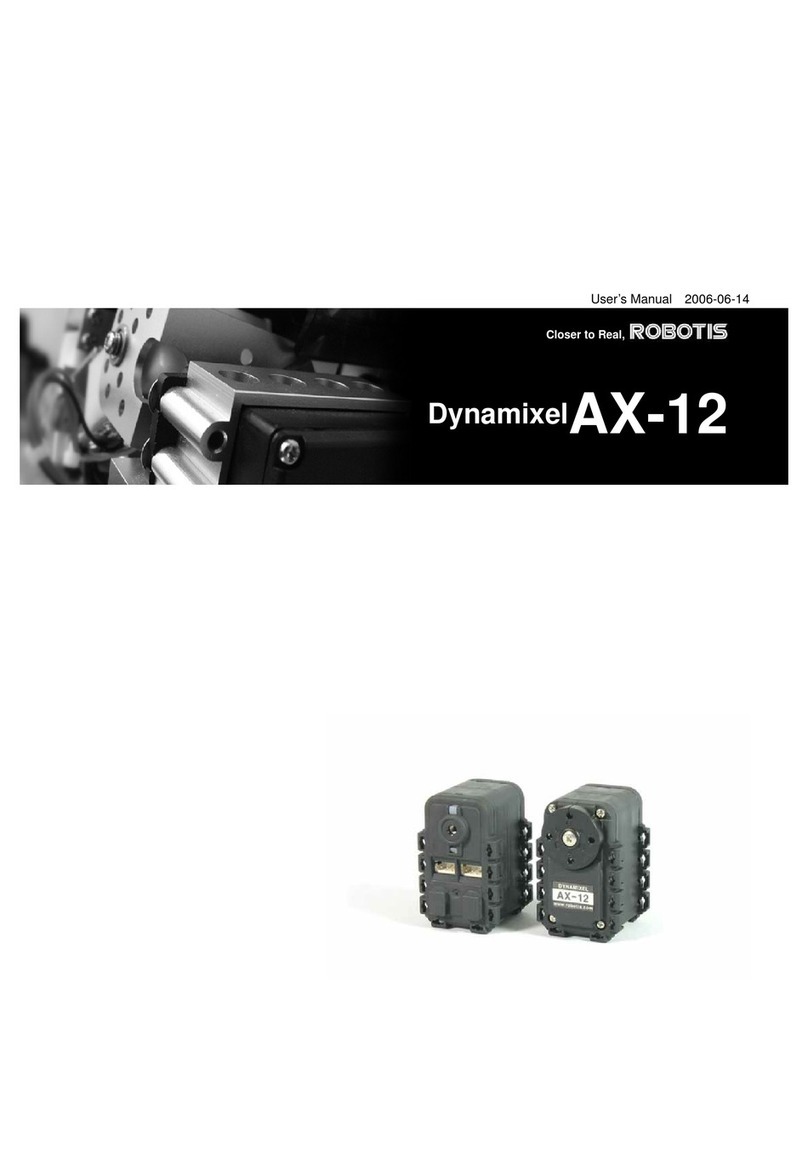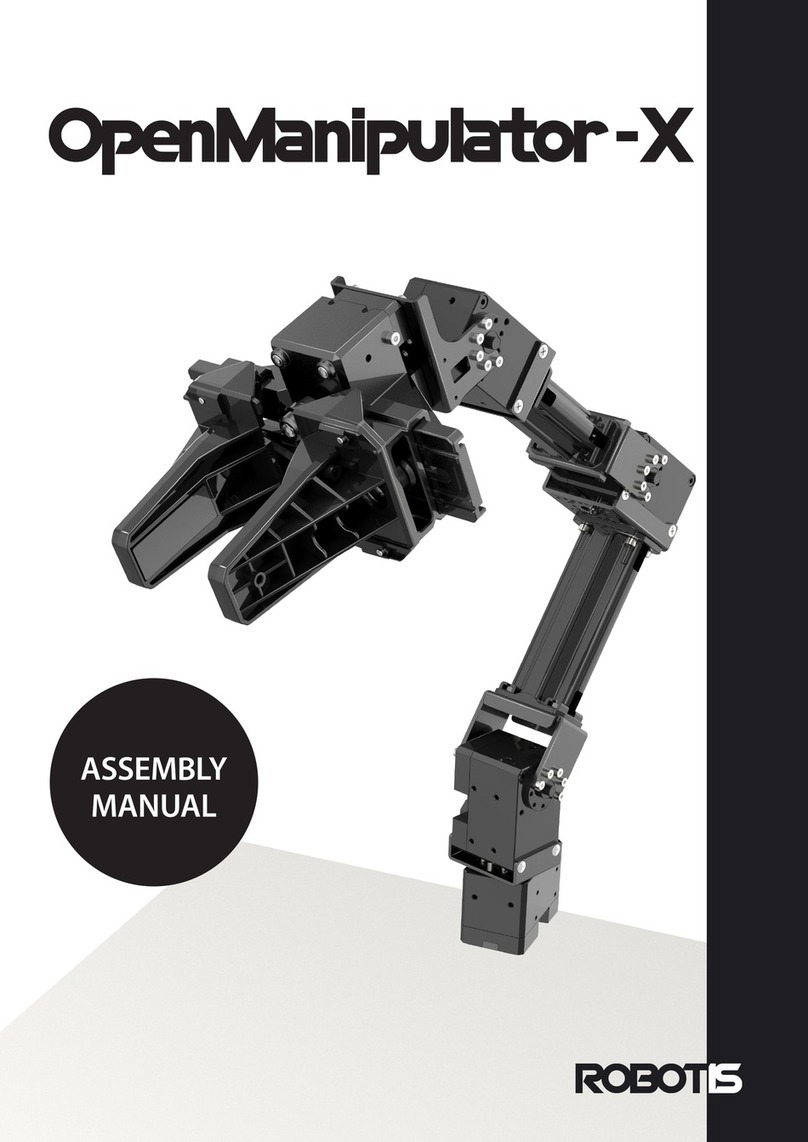RX-64
1-2. Strong Points of Dynamixel
Torque In spite of the compact size, it generates relatively big Torque by way of the efficient
speed reduction.
Close Control It can control location and speed with the resolution of 1024.
Elasticity Setting It can set up the extent of elasticity when controlling position with Compliance Driving.
Position, Speed It can read the current position and speed.
Communication It is easy to wire since it is connected with Daisy chain, and up to 1M BPS of
communication speed is supported.
Distribution Control Since the main processor can set speed, position, compliance, torque, etc.
simultaneously with a single command packet, it can control several Dynamixels with a
little resource
Physical Intensity The main body is made of engineering plastic to withstand against strong external force.
Efficiency against Since a bearing is used at the last axis of the gear, the amount of efficiency reduction is
External Force minimal even if strong external force is applied to the axis.
Safety Device It has the [Alarming] function, which notifies when internal temperature, torque, supplied
voltage, etc. deviate from what the user has set, and the [Shut down] function, which
allows it to cope with situation by itself.
Status Indicator It informs the user of ERROR status via LED.
5
